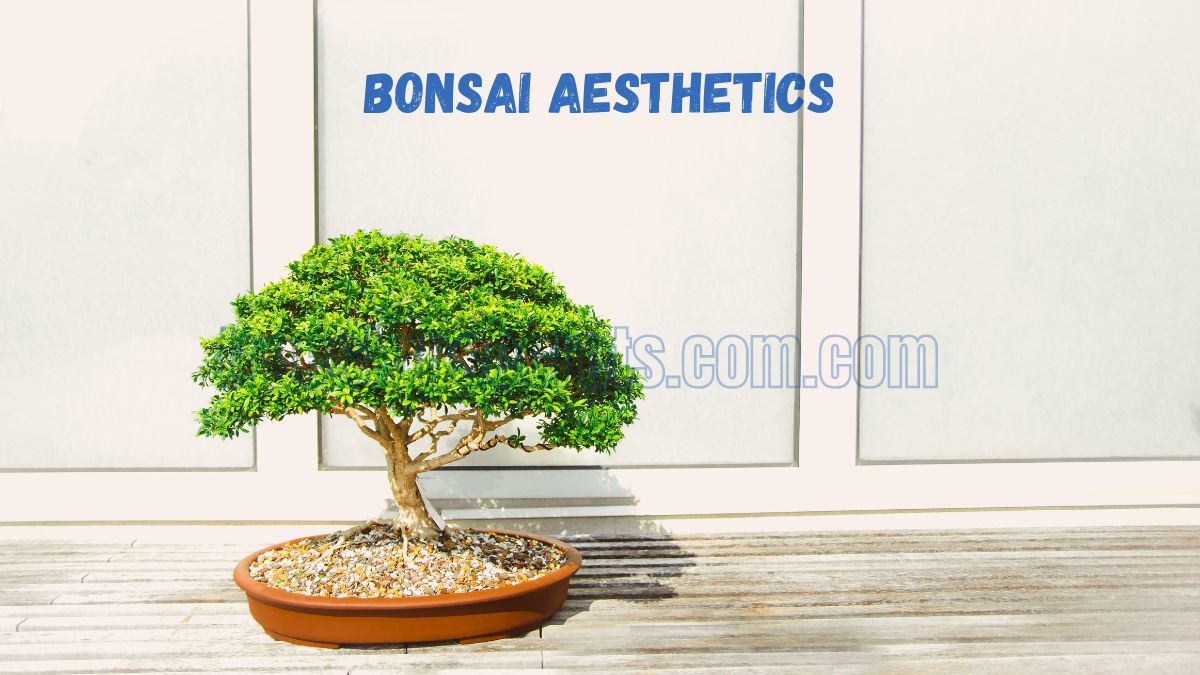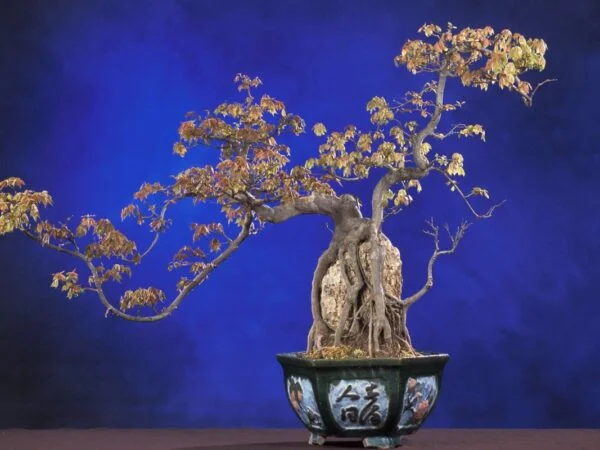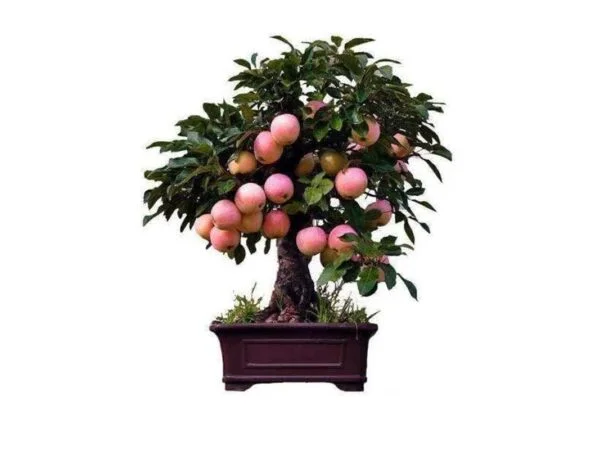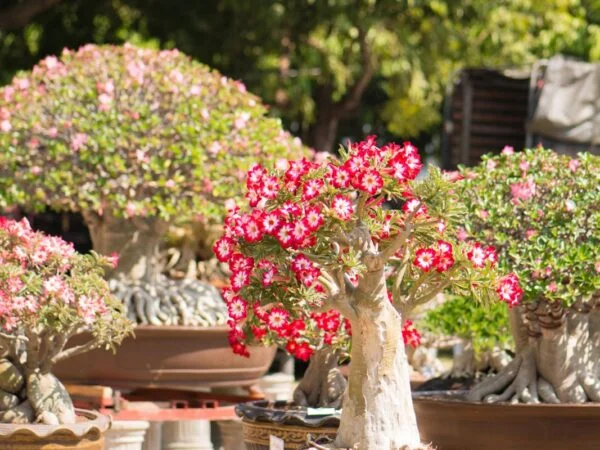Key Takeaways
- To develop successful, eye-catching designs, we first need to know the aesthetic principles of bonsai. By concentrating on proportion, balance, and line aesthetics principles, you can craft an improved aesthetic that reveals the true beauty of your bonsai trees.
- Cultural values such as ideas around harmony, balance, and imperfection contribute to bonsai aesthetics. Seek out alternative cultural perspectives and aesthetics, broaden your practice beyond the Western canon to deepen your work.
- Understanding the philosophical underpinnings of simplicity and naturalness will help you approach bonsai design with the right mindset. Adopt these principles to come up with honest and poetic designs.
- Balance is important to all bonsai designs to create pleasing, harmonious designs. Master the art of negative space Negative space, or the area between and around your subjects, can be powerful.
- Lines are the basis of any art, and line is very important in bonsai aesthetic principles. Play with the lines of trunks, branches, and foliage to develop flow and movement with your compositions.
- Patience and long-term commitment are cornerstones of the aesthetic spirit behind bonsai practice. Appreciate that developing bonsai is a long term endeavor that will produce aesthetically pleasing results in seasons to come.
Bonsai aesthetic principles are based on the observation of natural forms, in pursuit of miniature trees that resonate with beauty and harmony. As with the bonsai aesthetic principles, these principles stress balance, proportion, and simplicity to help you create a bonsai that inspires peace and calm.
Properly understanding which tree species to choose is crucial. In addition, selecting the proper pot size and creatively placing the branches and leaves is important. Knowing these logistical and aesthetic principles will set you on your way to crafting not only a beautiful piece but one with purpose.
As you step into the bonsai aesthetic principles, prepare to discover enchanting narratives woven into every tree. Each one is a celebration of the organic world, distilled into an exquisite miniature. Let’s unpack these aesthetic principles further and explore how you can use them to guide and inform your approach to bonsai.
Understanding Bonsai Aesthetics
Bonsai aesthetics should be based on guidelines that value allure and balance, emphasizing harmonious bonsai design. These four principles form the foundation for how bonsai trees are created, harmonizing nature and artistic expression.
What are the Key Aesthetic Principles?
These are some of the most important aesthetic principles, along with proportion, balance, and line. Proportion allows the bonsai to begin to take the form of an actual tree in nature.
Balance may be symmetrical or asymmetrical, adding interest and elegance to the overall composition. Movement is equally important, creating a sense that a design is alive and filled with energy.
The smart application of negative space is eye-catching. It brings attention to the negative space and rejoices in the empty space around each component of the bonsai.
How Do Cultural Values Influence Aesthetics?
Each culture interprets bonsai aesthetics in its own way. For instance, Japanese bonsai aesthetics is more about restraint and naturalness, while Western interpretations would allow for more creative forms.
Cultural significance, along with historical context, has heavily influenced these designs, providing a deep well of inspiration to the evolution of bonsai aesthetics.
What Philosophies Underlie Bonsai Design?
Concepts like authenticity, artistic interpretation, and a number of other philosophical concepts underlie bonsai as a practice. Bonsai artists, like all artists, are bent upon finding something new, something different, something unique, all the while still reflecting and respecting nature.
Clarity and consistency in styling are essential, finding a good balance while making sure everything is cohesive and plays with everything else.
Patience and perseverance are also crucial. Patience is one of the key virtues needed, as it takes many years to develop a bonsai tree to a mature state.
The Principle of Proportion
Proportion and scale are hugely significant to bonsai aesthetic, dictating what we find beautiful in these tiny trees. It’s more than just aesthetics and beautifying them. It’s not just about designing a visual rhythm that works in theory – that speaks to our sense of balance.
The principle of proportion focuses on the way two distinct parts work together. When these pieces are aligned, the picture becomes immensely fulfilling. In bonsai, the trunk size, branch size, and leaf size all need to be in proportion. That unity enhances the overall beauty of the tree.
Importance of Size and Scale
Size and scale are critical components to creating a balanced bonsai design. An adult large tree can completely overpower a small area, or a small tree might be overwhelmed if planted in a large context.
A round, compact tree with a dense, full trunk serves as a stunning focal point. It really is the perfect bridge piece. It draws the eye and anchors the design beautifully. A tall, narrow tree with lacy branching can suggest elegance and rhythm.
Root-to-Height Ratio Explained
That is another important aspect. This proportion represents the equilibrium between the root system of the tree and its height, which affects the tree’s stability as well as the aesthetic harmony.
A strong, well-proportioned root system helps sustain a taller tree. This support creates a strong base for the tree to grow tall and strong, while developing its beautiful form.
How Proportion Affects Visual Appeal
The right proportions go a long way toward a tree’s gracefulness. Surprisingly, the relationship between trunk thickness, height, and canopy spread dictates the way we perceive a bonsai.
A trunk that is too slender for its height will appear frail. A tree with a stout trunk communicates more authority and maturity, lending believability to the tree.
Achieving Balance in Bonsai
Balance in bonsai can be hard to achieve, but it’s important for making aesthetically satisfying designs. It’s about balancing the visual weight of the tree’s components to create equilibrium. This balance can be dynamic, producing an active and poised form.
Or, it can be active, implying action, fluidity, and a colorful quality of life. Learning the rules and how to use these elements to your advantage will take your bonsai designs to the next level.
Symmetrical vs. Asymmetrical Balance
Symmetrical balance is pleasing to the eye, giving a sense of order and tranquility, and is commonly found in classical bonsai. It’s asymmetrical balance that brings the drama and the movement, perfect for making the most of contemporary interpretations.
If you wish to create a peaceful and harmonious effect, then use symmetrical balance to convey that calm. Opt for asymmetrical balance when aiming for lively compositions that convey a sense of movement, development, or transformation.
The Role of Negative Space
Negative space is the area around and/or between the bonsai’s branches and leaves. It makes a more aesthetically pleasing composition because it gives some breathing space, a place for the viewer’s eye to rest.
This negative space helps create some depth, making the tree look more three-dimensional. A carefully located void can highlight the tree’s silhouette to improve the balance of the display.
How Balance Enhances Composition
Once you have achieved balance, it can truly take your bonsai’s composition to the next level. A balanced bonsai, like one with an interesting nebari, will seem more rooted and age appropriately.
For example, a tree with different heights on each side allows visual interest without creating the boredom of bilateral symmetry. This meticulous composition of limbs and absence thereof results in a unique visual power.
The Significance of Line in Design
In bonsai design, the role of line is fundamental. Besides serving as aesthetic qualities, trunk lines and branch structures provide more than visual interest — they offer a clear framework and direct flow on the entire page. Concentrating on these compositional features creates the viewer’s experience and emotional relationship to the bonsai tree artwork.
Understanding Trunk, Branch, and Foliage Lines
In VIPS, trunk lines are always the struts of the bonsai, creating the form’s verticality and strength. Branch lines are piquant as well as frisky as they shoot from the trunk, drawing the outline of the tree and shaping its individuality.
Foliage lines, like the vein patterns used frequently in Jacobs’ work, complete the design to provide texture and depth. These lines all combine to form a clearly integrated visual story. This design guides the viewer’s eye to admire the detailed balance and harmony that grows inside the bonsai itself.
Creating Flow with Line Structure
Creating movement by directing through the use of lines is so important toward creating an energetic composition. By lightly bending the trunk, the designer engages the viewer’s attention.
By locating branches more intentionally, we can focus their view from a long-term problem to a short-term solution. The direction of the lines is very important to the flow of the design. They highlight points of interest and give a feeling of movement and activity.
How Lines Convey Movement
Lines are magical in their ability to imply action and energy. An informal upright character most often has leaning trunk lines. It relies on broad branch lines to simulate the impact of wind or gravity.
Cascade bonsai styles have long, downward lines that establish an impressive sense of falling. This deliberate design choice adds to the organic aesthetic flow of the overall lyrical piece.
Creating Depth in Bonsai Art
One of the most powerful ways to create depth—real or perceived—is through the use of depth in a bonsai composition. Utilizing layering, paths, and different perspectives creates depth, taking a two-dimensional composition and inviting the audience into an immersive setting filled with movement and interaction.
Join us as we cover specifically how to create this depth using tasteful layering and spatial organization.
Utilizing Foreground, Midground, and Background
In bonsai art creation, these layers of foreground, midground, and background serve a vital function. Often the foreground might include more detailed objects, like rocks or miniature trees that attract first attention.
The midground usually is where the significant bonsai tree will be depicted and the background can be larger trees or a separate landscape entirely. To achieve the effect of depth, place these items properly.
Position a smaller tree in the foreground, off center to one side. This can help the viewer’s eye to focus on your main subject in the midground.
Techniques for Enhancing Depth Perception
One of the best ways to create depth perception is through using a combination of high trees, medium trees, foreground trees, wide trees, narrow trees. Higher-maturing trees towards the rear create a dramatic feeling of scale and depth.
The smaller, shorter trees in the foreground act to increase visual depth. Apply thinning techniques to open up the canopy. This will allow light to shine through and produce shadows that’ll create an added three-dimensional depth.
Seasonal Changes and Their Impact on Depth
The seasons play a crucial role in the aesthetic depth of bonsai art. In spring, the intense greens emerge to serve as a curtain of lushness.
As fall approaches, deep crimsons and yellows paint each tree with a fresh layer of color. The texture of foliage matters; finer leaves appear delicate, while broader leaves can provide contrast, enhancing depth throughout the year.
Harmony in Bonsai Composition
Harmony in bonsai creation is the foundation for achieving a balanced beauty. It unites the different elements to create a singular integrated whole that draws in and mesmerizes the viewer. In bonsai composition, there are no small things.
Even the shapes of the rocks chosen and how they are placed all play a part in creating visual harmony. When all of these elements play nice, they create a sense of harmony and calm that is essential to achieving balance.
Achieving Unity and Coherence
While dynamic tension plays an important role in bonsai composition, unity and coherence are equally necessary for visual interest. They do so while keeping every element feeling connected, creating a more inviting design.
This can be done by creating harmony with the pot shapes and tree formations to have repetition and consistency. For example, if your tree has soft, flowing branches, a round pot will complement its form and overall beauty.
Consider the scale of each visual element; larger stones fit with bigger trees, smaller accent pieces suit smaller even delicate plants.
Color and Texture Harmony Explained
Color and texture play a huge role in the harmony of bonsai. Choosing colors that contrast and complete one another’s appearance is important.
For instance, using deep green foliage in conjunction with tactile, earthy brown colored pots makes for a nice complement. Contrasts in texture, such as shiny smooth leaves with lustrous luster on heavily fissured bark, give an added dimension and variety.
Choosing materials that reflect these colors—for example, choosing gravel or moss that matches the pot color—creates an even stronger overall composition.
Symbolic Elements of Harmony
Harmony in bonsai has associated symbolic representations. It is frequently seen as a symbol of tranquility and harmony, which speaks to strong cultural roots.
Features such as a bent trunk may represent strength, whereas symmetrical branches can reflect peace. By incorporating these symbols into your compositions, you can create bonsai designs that carry a more profound emotional resonance.
Embracing Authenticity in Bonsai
Authenticity in bonsai means a sincere reflection of nature’s beauty in miniature. It is an essential and lesser-known contributor to the production process. It helps you develop trees that reflect and accept life’s inherent flaws and irregularities.
When authenticity is the primary focus, you cultivate a plant that evolves into a unique living work of art. This is a testament to how profoundly you connect with nature.
Respecting Natural Forms and Imperfections
Allowing for imperfect techniques and a little less polish is critical to achieving realism and authenticity in bonsai. Nature will never show you a perfect tree; every tree should have its own peculiarities and characteristics.
Even just seeing the potential in a warped trunk can inspire creativity. Its gnarled branches inform a design proposal that speaks to this recovery with an equally poignant narrative of perseverance.
This reverence for natural forms produces unique, original, often whimsical creative bonsai designs. It helps you get to the heart of the space.
Artistic Interpretation of Bonsai Styles
While embracing authenticity is paramount, artists are encouraged to interpret traditional bonsai styles in ways that reflect authenticity. You have to know where styles come from.
Check out the long elegant lines of the Weeping Willow and the gnarled age of a Juniper. By balancing innovation with tradition, a personal expression can emerge that respects the lineage of the art form.
How Authenticity Reflects Cultural Narratives
Authenticity in bonsai reflects the larger cultural stories and values. Whether it’s the history of a certain region or the story surrounding a war-time decision, each bonsai can tell a story.
This narrative quality adds to the overall experience of bonsai art, fostering a more profound bond with observers.
The Role of Patience in Cultivation
Patience is key in bonsai cultivation, especially when aiming for a harmonious composition in your bonsai design efforts. This process of growing these little trees requires commitment to achieve the desired aesthetic qualities.
Understanding the Slow Process of Growth
Bonsai trees are an exercise in cultivation and patience, sometimes spending decades to create just the right form. The patience of this slow growth process is something worth learning. Each cut of the branch, application of wire and shifting of soil makes a move toward fulfilling the tree’s design aesthetic and health requirements.
When you give yourself permission to work at this slower pace, you’ll find that the outcomes are often the most gratifying. A well-cultivated bonsai gradually unveils breathtakingly beautiful organic artistry and craftsmanship. Perhaps most importantly, these features honor your passion and tireless efforts.
Long-Term Commitment to Aesthetic Goals
If your aesthetic vision for your eventual bonsai tree is to be realized, you need to think long-term. Just as with the example above, constant attention and a schedule of ongoing maintenance are required. You’ll need to prune, water, and nurture your bonsai’s root system and sunlight needs each and every day.
As a result of this focus on detail, the tree grows providing the opportunity to develop the tree further and create the artistic statement you desire. As you watch your bonsai flourish, the satisfaction of seeing it evolve into a masterpiece makes the effort worthwhile.
Overcoming Creative Challenges in Bonsai
Bonsai artists encounter creative problems, like what shape to form their bonsai into, or how to adjust to a tree growing in an unplanned direction. To get past these challenges, be willing to think outside the box and use every failure as a teachable moment.
Keeping a journal can help track your progress and maintain motivation. Recording your process gives you a reference point to look back and see where you’ve grown and what you’ve achieved, re-igniting your interests in this beautiful craft.
Conclusion
Bonsai aesthetics are a beautiful introduction to the practice of mindfulness and beauty. Gradually, you come to admire each tree’s individual form and character. The aesthetic principles of proportion, balance, line, depth, harmony, and naturalness shape your path. With each element combining, your unique style and choices will come together to create an eye-catching piece that’s totally you. Patience is the greatest virtue, each little change is an incremental step toward development. The more you care for your bonsai, the more you’ll connect with nature and yourself. Experience this fulfilling art form, and experience the peace and imagination that bonsai can cultivate. Begin your bonsai adventure now, and see your talents bloom as you cultivate your very own living masterpiece.
Frequently Asked Questions
What are the basic principles of bonsai aesthetics?
Bonsai aesthetics are guided by principles such as proportion, balance, and harmony, which inform bonsai design efforts to achieve a beautiful and contemplative reflection of nature in the overall structure.
How does proportion affect bonsai design?
Proportion refers to the size relationships between various elements of the bonsai design, ensuring harmony with everything else on the bonsai tree. Proper proportions help achieve a realistic balance and harmony, enriching its overall aesthetic and enhancing its natural beauty.
Why is balance important in bonsai?
Balance provides harmony in the composition of the bonsai tree, ensuring that no single element overpowers others. This allows the viewer's eye to flow naturally across the overall aesthetic, enhancing the visual impact.
What role does line play in bonsai aesthetics?
Lines, both natural and implied, control the viewer’s gaze across the full length of the bonsai tree, emphasizing its verticality and height. This creates an open atmosphere, producing a fluid and intriguing visual journey through the overall aesthetic.
How can I create depth in my bonsai?
Layering is a crucial way to create depth in your bonsai design efforts. Play with height and depth to emphasize the bonsai tree’s three-dimensionality, making it seem more realistic and capturing viewers’ attention.
What does harmony mean in bonsai composition?
Harmony in bonsai design is the idea that every element plays its part as a whole, contributing to the overall aesthetic. The bonsai tree suggests the healing power of peace and harmony, where each component enhances the intricate beauty of the collective.
Why is patience essential in bonsai cultivation?
Patience in bonsai design takes years to fully realize its beauty. This process allows for careful observation and adjustment, leading to a healthier bonsai tree that reflects the art's true essence.
Image Source: Paid image from CANVA





